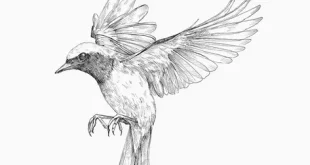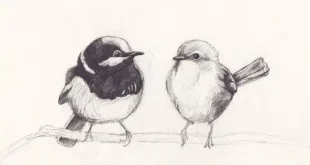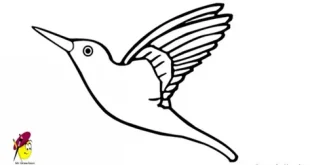Cassowary Birds: The Fascinating Giants of the Bird World
1. Introduction to Cassowary Birds

Cassowary birds are among the most striking and powerful flightless species inhabiting dense tropical forests worldwide. Known for their vibrant blue skin and helmet-like casque, they stand as symbols of wild beauty. These birds are native to northern Australia, Papua New Guinea, and nearby islands, where they play crucial roles in maintaining ecological balance. Their towering height, often reaching over six feet, makes them the second-heaviest bird species globally. Despite their majestic appearance, cassowary birds are considered dangerous due to their strong legs and dagger-like claws. They are generally shy, preferring to remain hidden in dense vegetation, but can become aggressive when threatened. Understanding their significance provides valuable insight into rainforest conservation efforts and highlights the importance of preserving their natural habitats against ongoing threats from human activity.
2. Physical Characteristics and Unique Traits of Cassoway Birds
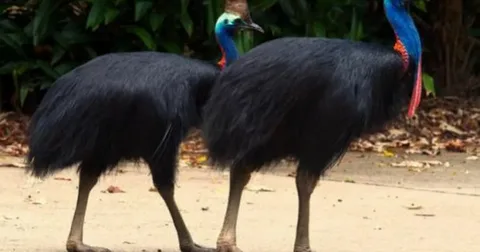
Cassowary birds are instantly recognizable due to their stunning colors and massive build, making them captivating wildlife attractions. Their plumage is coarse and black, contrasting sharply with the bright blue and red markings adorning their heads. The most distinctive feature is the casque, a helmet-like structure that aids in pushing through dense vegetation. Their muscular legs, equipped with sharp claws, provide defense against predators and allow them to sprint at impressive speeds. These birds are also excellent swimmers, capable of crossing rivers and navigating coastal waters with ease. Their large size and unique adaptations allow cassowary birds to thrive in diverse rainforest ecosystems. While they may appear intimidating, these traits are essential for their survival in complex environments. Observing them in the wild offers rare opportunities to appreciate one of nature’s most remarkable evolutionary designs.
3. Habitat and Distribution Patterns Cassoway Birds
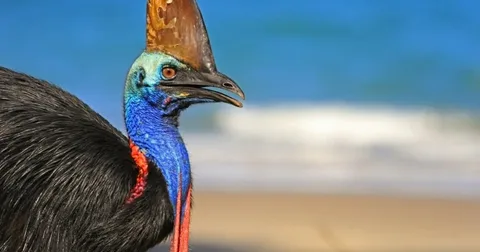
Cassowary birds primarily inhabit lowland tropical rainforests, mangrove swamps, and grasslands scattered across their native regions. They thrive in dense, humid areas filled with fruit-bearing trees, which form the foundation of their diet. These birds are mostly solitary creatures, marking large territories and interacting with others only during breeding seasons. Their distribution ranges widely across northern Australia, Papua New Guinea, and surrounding islands, where they are regarded as cultural and ecological icons. Unfortunately, deforestation and human encroachment have significantly reduced their available habitat, leading to population declines in certain areas. Cassowary birds depend heavily on intact rainforests for shelter, food, and reproduction, making habitat conservation a pressing priority. Maintaining forest health directly influences their survival, as well as the well-being of countless other species dependent on the same environment.
4. Cassowary Birds Role in Ecosystem and Conservation Importance
Cassowary birds are often called “gardeners of the rainforest” due to their essential seed-dispersal role. Their diet consists mainly of fallen fruits, which they swallow whole, later dispersing seeds across wide territories. This process ensures the regeneration of rainforest vegetation, maintaining ecosystem diversity and resilience against climate challenges. Without cassowaries, many tree species would struggle to reproduce effectively, altering forest composition dramatically. Despite their ecological significance, these birds face ongoing threats from hunting, road accidents, and shrinking habitats. Conservation organizations worldwide are raising awareness about the importance of protecting cassowary birds and their environments. Initiatives include creating wildlife corridors, reducing deforestation, and promoting coexistence with human communities. Supporting such conservation measures not only safeguards these remarkable birds but also preserves the integrity of vital rainforest ecosystems for future generations.
5. Human Interactions and Safety Precautions
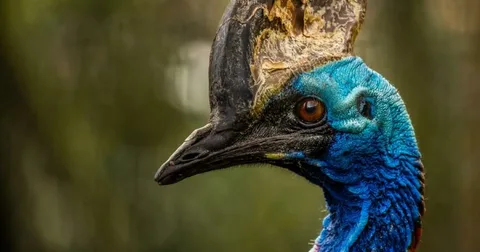
Cassowary birds have a complex relationship with humans, combining admiration, curiosity, and sometimes fear due to their reputation. While they are generally reclusive, encounters can occur in areas where human settlements overlap with rainforests. Known for their powerful kicks, cassowaries can injure humans if provoked or threatened, making caution essential during encounters. Wildlife experts advise avoiding close interaction, refraining from feeding, and maintaining safe distances when observing these birds in natural habitats.
Cassowary Birds: The Mysterious Giants of the Forest
Cassowary Birds are large, flightless birds known for their striking blue necks, helmet-like casques, and powerful legs. Native to dense forests and wetlands in the USA, these birds are solitary and highly territorial. Their bright colors and unique appearance make them one of the most fascinating bird species in the world. Cassowaries feed mainly on fruits, small animals, and fungi, playing a vital role in seed dispersal and forest regeneration. Despite their beauty, they can be dangerous if threatened due to strong legs and sharp claws. Observing Cassowary Birds in their natural habitat provides a rare glimpse into one of nature’s most unique and enigmatic creatures.
Habitat, Diet, and Conservation of Cassowary Birds
Cassowary Birds prefer tropical forests, wetlands, and dense vegetation where food and shelter are abundant. They consume a wide variety of fruits, which helps in dispersing seeds across the forest floor. These birds are largely solitary except during breeding season when pairs form temporarily. Habitat loss, hunting, and human interference have posed serious threats to their population in some areas. Conservation efforts focus on protecting forests, reducing human-wildlife conflict, and raising awareness about their ecological importance. Cassowary Birds remain a symbol of the wild’s mystery and power, fascinating bird watchers and wildlife enthusiasts across the globe.
 Birds Drawing Birds Drawing
Birds Drawing Birds Drawing

